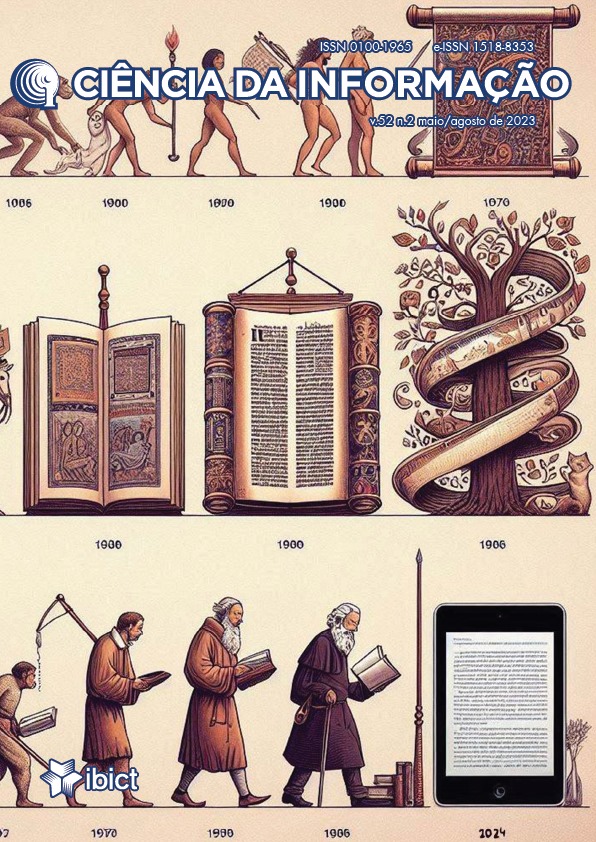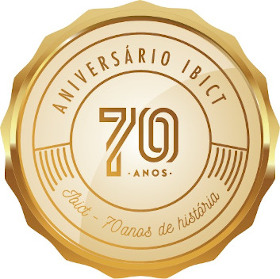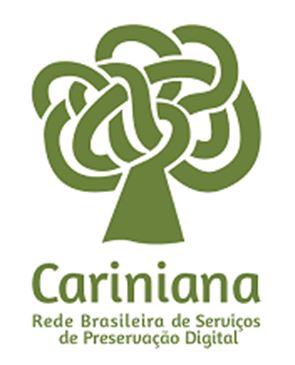Semi-automatic content assessment of ICT Master Plans with Natural Language Processing technologies
DOI:
https://doi.org/10.18225/ci.inf.v52i2.5967Keywords:
Natural language processing., Text mining., Semantic evaluation of ICT Master Plan., Information retrieval.Abstract
This paper presents the results of a research on text mining and semi-automatic assessment of interesting content on the Information and Communication Technology Master Plans published by a significant sample of Union’s government agencies. Using natural language processing technologies, it was retrieved useful information and made interesting discoveries from the documents of the plans for assessment of the state-of-the-art on ICT in the agencies, some of which having caused surprise (due to serendipity), such as the demand management model in some units based on estimates of the teams' delivery capacity. It is concluded that the plans are in compliance with the SISP Guide, including the observed interest of most agencies in current management issues such as governance and risk management, and maturity in the assessment of market trends, but also is evident that its contents still lack approaches on some important ICT management practices to guide its technical evolution.
Downloads
References
ABRAMS, Charles; SCHULTE, Roy W. Service-Oriented Architecture Overview and Guide to SOA Research. Gartner Group, January 3, 2008.
BATISTA, Vera; AZEVEDO, Alessandra; HESSEL, Rosana. Força-tarefa contra filas no INSS ganha reforço. Correio Braziliense, 17 jan. 2020. Economia, p. 7.
BELL, Michael. Service-Oriented Modeling: Service Analysis, Design, and Architecture. John Wiley & Sons, 2008.
BRASIL. Ministério do Planejamento, Orçamento e Gestão. Guia de Elaboração de PDTI do SISP – Versão 1.0. Brasília: MPOG, 2012. Disponível em: <http://www.sisp.gov.br/.../Guia_de_Elaboração_de_PDTI_v1.0...pdf>. Acesso em: 2 jan. 2020.
BRASIL. Tribunal de Contas da União. Acórdão nº 2608/2018-TCU-Plenário. Disponível em: <https://pesquisa.apps.tcu.gov.br/#/documento/acordao- ...>. Acesso em: 25 out. 2020.
BRASIL. Tribunal de Contas da União. Acórdão nº 1603/2008-TCU-Plenário. Disponível em: <https://pesquisa.apps.tcu.gov.br/#/resultado/acordao-completo/.>. Acesso em: 25 out. 2020.
COSTELO, Katie. The Evolution of Enterprise Architecture. Gartner Group, January 11, 2019. Disponível em: <https://www.gartner.com/smarterwithgartner/the-evolution-of-enterprise-architecture/>. Acesso em: 2 jan. 2020.
CRAWLEY, Ed. Introduction to System Architecture – Architecture to Value. Presentation Document, Rev. 2.0. USA: MIT, January 5, 2007. Disponível em: <https://ocw.mit.edu/courses/engineering-systems-division/esd-34-system-architecture-january-iap-2007/lecture-notes/lec1.pdf>. Acesso em: 21 jan. 2020.
GARTNER GROUP. Gartner Glossary: Enterprise Architecture. Gartner Group, 2020(a). Disponível em: <https://www.gartner.com/en/information-technology/glossary/enterprise-architecture-ea>. Acesso em: 2 jan. 2020.
GARTNER GROUP. Gartner Glossary: Service-oriented Architecture (SOA). Gartner Group, 2020(b). Disponível em: <https://www.gartner.com/en/information-technology/glossary/service-oriented-architecture-soa>. Acesso em: 22 jan. 2020.
HERMANS, Paul. The Zachman Framework for Architecture Revisited: on conceiving the informational enterprise. Semiosis, 2015. Disponível em: <https://www.zachman.com/resource/ea-articles/321-the-zachman-framework-for-architecture-revisited-by-paul-hermans>. Acesso em: 2 jan. 2020.
KAO, Anne; POTEET, Stephen R. (Eds.). Natural Language Processing and Text Mining. Springer, 2007.
KONCHADY, Manu. Text Mining Application Programming. Charles River Media, 2006.
KOTUSEV, Svyatoslav. Enterprise Architecture: What Did We Study? International Journal of Cooperative Information Systems, v. 26, n. 4, 2017. Disponível em: <https://www.academia.edu/36770941/Enterprise_Architecture_What_Did_We_Study>. Acesso em: 24 out. 2020.
KOTUSEV, Svyatoslav. The History of Enterprise Architecture: An Evidence-Based Review. Journal of Enterprise Architecture, v. 12, n. 1, 2016. Disponível em: <https://www.researchgate.net/publication/308936998_The_History_of_Enterprise_Architecture_An_Evidence-Based_Review/link/.../download>. Acesso em: 24 out. 2020.
LIMA-MARQUES, Mamede; MACEDO, Flávia Lacerda Oliveira. Arquitetura da Informação: base para a gestão do conhecimento. In: TARAPANOFF, Kira (Org.). Inteligência, Informação e Conhecimento. Brasília: UNESCO e IBICT, 2006, p. 241-255.
MEADOW, Charles T.; BOYCE, Bert R.; KRAFT, Donald H.; BARRY, Carol. Text Information Retrieval Systems. 3. ed. Elsevier, 2007.
NICOLAIDOU, Mara; TSADIMAS, Anargyros; ALEXOPOULOU, Nancy; ANAGNOSTOPOULOS, Dimosthenis. Employing Zachman Enterprise Architecture Framework to Systematically Perform Model-Based System Engineering Activities. Proceedings of the 42nd Hawaii International Conference on System Sciences 2009. Disponível em: <http://galaxy.hua.gr/~tsadimas/papers/HICCS08.pdf>. Acesso em: 2 jan. 2020.
NOGUEIRA, Alexandre Martins. Auditoria de Governança e Gestão dos Serviços Públicos Digitais. Apresentação. Brasília: CGU, 12 set. 2017. Disponível em: <https://portal.tcu.gov.br/lumis/portal/...Download.jsp?fileId=8A>. Acesso em: 24 jan. 2020.
ROSS, Jeanne W.; WEILL, Peter; ROBERTSON, David C. Arquitetura de TI como Estratégia Empresarial. Tradução: Roger Maioli dos Santos. EUA: Harvard Business School; São Paulo (Brasil): M. Books, 2008.
SCOTT, Mike. WordSmith Tools Manual – Version 7.0. Stroud, Gloucestershire (UK): Lexical Analysis Software Ltd., 2019.
WURMAN, R. S. Information Architects. New York: Graphis, 1997.
ZACHMAN, John A. The Concise Definition of The Zachman Framework. Zachman International, 2008. Disponível em: <https://www.zachman.com/16-zachman/the-zachman-framework/35-the-concise-definition>. Acesso em: 2 jan. 2020.
ZACHMAN, J. A. A Framework for Information Systems Architecture. IBM Systems Journal, (26:3), 1987, p. 276-292.
Downloads
Published
Issue
Section
License
Copyright (c) 2024 Ethel Airton Capuano

This work is licensed under a Creative Commons Attribution-ShareAlike 4.0 International License.
- This publication reserves the right to modify the original, regarding norms, spelling and grammar, in order to maintain the standards of the language, still respecting author writing style;
- The final proofs will not be sent to the authors;
- Published works become Ciência da Informação's property, their second partial or full print being subject to expressed authorization by IBICT's Director;
- The original source of publicaton must be provided at all times;
- The authors are solely responsible fo the views expressed within the article;
- Each author will receive two hard copies of the issue, if made availalbe in print.




























